
- Exploring the Stunning Architecture of Sagrada Familia in Barcelona
- How to Reach Sagrada Familia: Directions and Transportation Tips
- The History Behind Sagrada Familia: A Journey Through Time
- Top Things to Do Near Sagrada Familia: Local Attractions and Experiences
- Sagrada Familia: A UNESCO World Heritage Site Worth Visiting
- Visiting Sagrada Familia: Essential Tips for Tourists
Barcelona is a city rich in history and culture, attracting millions of tourists each year. Among its many stunning landmarks, the Sagrada Familia stands out as a masterpiece of architectural innovation and artistic expression.
Discovering the Location of Sagrada Familia in Barcelona: A Must-Visit Landmark is an unforgettable experience for anyone exploring this vibrant city. Nestled in the Eixample district, this iconic basilica designed by Antoni Gaudí offers a unique glimpse into the fusion of art and spirituality, making it a highlight of any travel itinerary.
Exploring the Stunning Architecture of Sagrada Familia in Barcelona
The Sagrada Familia is not just a basilica; it is a testament to the genius of Antoni Gaudí and his innovative approach to architecture. The structure boasts intricate facades, each telling a different story from the Nativity to the Passion. This remarkable blend of Gothic and Art Nouveau styles captivates visitors with its unique forms and vibrant colors, making it a true architectural marvel.
Exploring the stunning architecture of the Sagrada Familia reveals several key features that set it apart from other landmarks. Among these are:
- Naturalistic Elements: Gaudí incorporated forms inspired by nature, evident in the tree-like columns that support the nave.
- Symbolism: Every aspect, from the number of towers to the sculptures, is laden with symbolic meaning reflecting Christian beliefs.
- Innovative Techniques: The use of hyperboloids and paraboloids in its design challenges traditional architectural conventions.
The basilica's breathtaking interior further enhances its appeal. As visitors step inside, they are greeted by a kaleidoscope of light filtering through the stained glass, creating a spiritual ambiance that resonates with its religious purpose. The soaring ceilings and organic shapes evoke a sense of being in a forest, providing a serene escape from the bustling city outside.
For those planning a visit, understanding the architectural timeline can be beneficial. The following table outlines key milestones in the construction of the Sagrada Familia:
| Year | Milestone |
|---|---|
| 1882 | Groundbreaking of the Sagrada Familia. |
| 1914 | Gaudí takes full control of the project. |
| 2026 | Projected completion of the basilica. |
In conclusion, exploring the stunning architecture of the Sagrada Familia in Barcelona is not just about witnessing an iconic structure, but also about experiencing the profound artistic vision that has captivated the world for over a century. Each visit offers new insights into Gaudí's exceptional creativity and the ongoing journey toward completing this breathtaking landmark.
How to Reach Sagrada Familia: Directions and Transportation Tips
Reaching the Sagrada Familia is straightforward, thanks to the extensive public transportation network in Barcelona. Visitors can take advantage of several options to make their journey easier. The most convenient methods include:
- Metro: The closest station is Sagrada Familia (L2 and L5 lines). From the station, it's just a short walk to the basilica.
- Bus: Several bus lines, including 19, 33, 34, and D50, stop near Sagrada Familia, providing easy access from different parts of the city.
- Walking: If you're staying in the Eixample district, the Sagrada Familia is within walking distance of many popular attractions.
For those planning to use public transport, purchasing a Barcelona Card can be beneficial. This card offers unlimited travel on public transport and discounted entry to various attractions, including Sagrada Familia. Additionally, consider downloading a local transportation app to help navigate the metro and bus schedules more efficiently.
Another important tip is to check the opening hours and try to arrive early, especially during peak tourist seasons. This will allow you to enjoy the basilica with fewer crowds and fully appreciate its intricate beauty. Aim to arrive at least 30 minutes before your scheduled entry time, which can help enhance your overall experience.
Lastly, if you prefer a more guided experience, several tour companies offer packages that include transportation to Sagrada Familia along with expert insights into its architecture and history. This option can be particularly appealing for those who want a deeper understanding of Gaudí’s masterpiece.
The History Behind Sagrada Familia: A Journey Through Time
The Sagrada Familia was commissioned in 1882, marking the beginning of a visionary project that would take over a century to come to fruition. Designed by the renowned architect Antoni Gaudí, the basilica reflects his deep commitment to intertwining faith and architecture. Gaudí's unique approach combined Gothic and modernist elements, creating a structure that is both functional and profoundly symbolic.
Throughout its construction, the Sagrada Familia has faced numerous challenges, including funding shortages and the Spanish Civil War, which halted work for several years. Despite these setbacks, the project has continued to evolve. Today, it stands as a tribute to Gaudí's unyielding passion and dedication, drawing millions of visitors who wish to witness its stunning beauty and intricate details.
Key events in the history of the Sagrada Familia include:
- 1882: Groundbreaking and the start of construction.
- 1926: Gaudí's tragic death, leaving the project unfinished.
- 2010: The basilica is consecrated by Pope Benedict XVI.
- 2026: Anticipated completion of the basilica, marking the centenary of Gaudí's death.
As the Sagrada Familia continues to be a work in progress, it embodies a rich tapestry of history, artistry, and faith. Each year, advancements in technology and craftsmanship bring this architectural wonder closer to completion, ensuring that Gaudí's vision will endure for generations to come.
Top Things to Do Near Sagrada Familia: Local Attractions and Experiences
When visiting the Sagrada Familia, take advantage of the surrounding attractions that enhance your experience in Barcelona. Just a short stroll away, you can find the Park Güell, another masterpiece by Antoni Gaudí. This vibrant park is filled with colorful mosaics and unique architectural forms, making it a perfect spot for leisurely walks and stunning photo opportunities.
Additionally, the Hospital de Sant Pau is a UNESCO World Heritage site located nearby. This hospital complex showcases remarkable modernist architecture, offering visitors a glimpse into early 20th-century Catalonia. Take some time to explore its beautiful gardens and intricate buildings, which reflect the same artistic spirit found in the Sagrada Familia.
Another attraction worth visiting is the Casa Batlló, situated not too far from the basilica. This iconic building, also designed by Gaudí, is renowned for its imaginative design and vibrant colors. The façade is a visual feast, and the interior offers an immersive experience into the mind of one of the greatest architects in history.
Finally, don’t miss out on experiencing local culture by visiting the nearby La Sagrada Família Market. Here, you can taste traditional Catalan delicacies and shop for unique souvenirs. Make sure to try some local tapas and fresh produce while soaking in the lively atmosphere, which truly embodies the spirit of Barcelona.
Sagrada Familia: A UNESCO World Heritage Site Worth Visiting
The Sagrada Familia is not only a stunning architectural landmark but also a UNESCO World Heritage Site recognized for its outstanding universal value. This designation highlights its significance as a masterpiece of human creativity, showcasing Gaudí's innovative fusion of architecture and nature. Visitors are drawn to its unique characteristics, which make it a symbol of Barcelona's cultural identity.
One of the compelling reasons to visit the Sagrada Familia is its ongoing construction, which has been a labor of love for over a century. The basilica's evolving design reflects the dedication and craftsmanship of countless artisans and architects who have contributed to its completion. Visitors can witness this process firsthand, gaining insight into the techniques and challenges faced throughout its history.
Moreover, the Sagrada Familia serves as a spiritual hub, attracting not only tourists but also pilgrims and locals who come to appreciate its religious significance. The basilica embodies a blend of faith and artistry, offering a peaceful retreat amidst the vibrant energy of Barcelona. Daily masses and special religious events are held, allowing visitors to experience its sacred atmosphere beyond just a sightseeing destination.
Finally, exploring the Sagrada Familia is complemented by its surroundings, which offer additional cultural and historical experiences. Nearby attractions, such as the Hospital de Sant Pau and Park Güell, create a richer understanding of Catalonia's artistic legacy. These sites enhance the visit, making the Sagrada Familia not just a destination, but part of a broader journey through Barcelona's architectural and cultural heritage.
Visiting Sagrada Familia: Essential Tips for Tourists
Visiting the Sagrada Familia can be an overwhelming experience due to its popularity, but with some careful planning, you can make the most of your trip. First and foremost, consider purchasing your tickets online in advance to avoid long queues. This not only saves time but also allows you to select a time slot that fits your schedule. Additionally, opting for a guided tour can provide you with deeper insights into Gaudí’s vision and the architectural details that make this basilica unique.
When planning your visit, it's essential to check the opening hours and any special events that might be taking place. The Sagrada Familia typically sees its peak crowds during weekends and holidays, so visiting during weekdays can enhance your experience. Early mornings or late afternoons are also recommended for a quieter experience. Remember to allocate enough time to explore both the interior and the exterior, as each perspective offers different breathtaking views.
Another useful tip is to dress appropriately, as the Sagrada Familia is a place of worship. While there is no strict dress code, it’s respectful to wear clothing that covers your shoulders and knees. Additionally, ensure you have your camera ready to capture the stunning details of the basilica, but be mindful of signs indicating areas where photography may not be permitted. Embrace the opportunity to appreciate the artistry without distractions.
Lastly, take advantage of the nearby amenities. There are numerous cafes and local eateries around the Sagrada Familia where you can enjoy a meal or take a break after your visit. Consider trying some traditional Catalan dishes or stopping by local shops for unique souvenirs. Here’s a quick list of nearby attractions you can explore:
- Hospital de Sant Pau: A beautiful modernist complex worth visiting.
- Park Güell: Another Gaudí masterpiece, perfect for leisurely strolls.
- Casa Batlló: A short distance away, showcasing Gaudí's distinctive style.
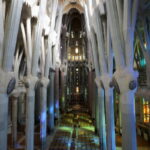 Sagrada Familia Finish Date: When Will It Be Completed?
Sagrada Familia Finish Date: When Will It Be Completed?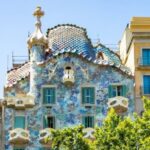 Admission Required: Casa Batlló is not free
Admission Required: Casa Batlló is not free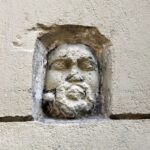 Left on Carrer dels Escudellers, continue to Carrer d'Avinyó
Left on Carrer dels Escudellers, continue to Carrer d'Avinyó Discovering the Iconic Landmark: Where is Sagrada Familia Located in Barcelona?
Discovering the Iconic Landmark: Where is Sagrada Familia Located in Barcelona?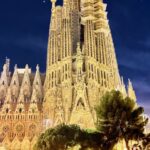 The Location of Sagrada Familia in Barcelona: A Guide to Finding Gaudí's Masterpiece
The Location of Sagrada Familia in Barcelona: A Guide to Finding Gaudí's Masterpiece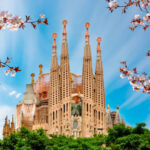 The Address of Sagrada Familia in Barcelona:
The Address of Sagrada Familia in Barcelona:If you want to know other articles similar to Discovering the Location of Sagrada Familia in Barcelona: A Must-Visit Landmark you can visit the category WHERE YOU CAN GO.
Deja una respuesta

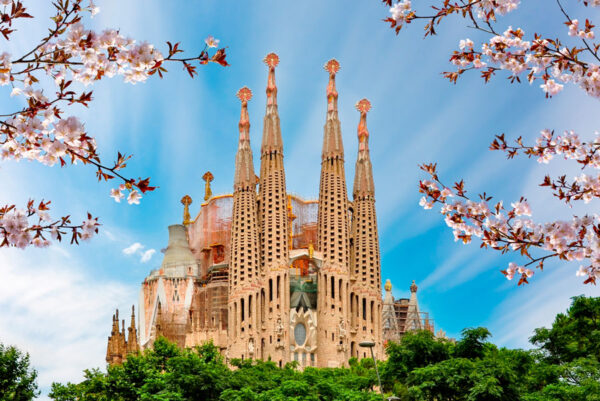








Read more!